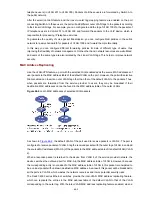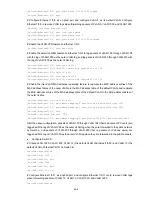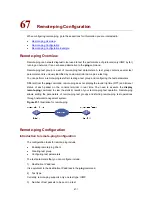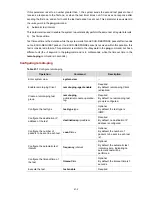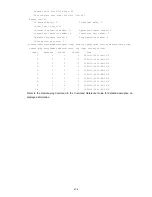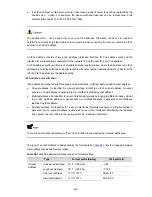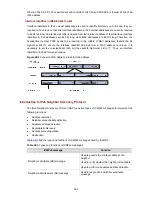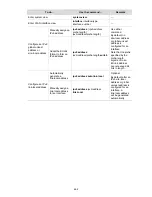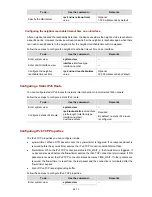
Hierarchical address structure
IPv6 adopts the hierarchical address structure to quicken route search and reduce the system source
occupied by the IPv6 routing table by means of route aggregation.
Automatic address configuration
To simplify the host configuration, IPv6 supports stateful address configuration and stateless address
configuration.
z
Stateful address configuration means that a host acquires an IPv6 address and related information
from the server (for example, DHCP server).
z
Stateless address configuration means that the host automatically configures an IPv6 address and
related information based on its own link-layer address and the prefix information issued by the
router.
In addition, a host can automatically generate a link-local address based on its own link-layer address
and the default prefix (FE80::/64) to communicate with other hosts on the link.
Built-in security
IPv6 uses IPSec as its standard extension header to provide end-to-end security. This feature provides
a standard for network security solutions and improves the interoperability between different IPv6
applications.
Support for QoS
The Flow Label field in the IPv6 header allows the device to label packets in a flow and provide special
handling for these packets.
Enhanced neighbor discovery mechanism
The IPv6 neighbor discovery protocol is implemented by a group of Internet Control Message Protocol
Version 6 (ICMPv6) messages. The IPv6 neighbor discovery protocol manages message exchange
between neighbor nodes (nodes on the same link). The group of ICMPv6 messages takes the place of
Address Resolution Protocol (ARP), Internet Control Message Protocol Version 4 (ICMPv4), and
ICMPv4 redirect messages to provide a series of other functions.
Flexible extension headers
IPv6 cancels the Options field in IPv4 packets but introduces multiple extension headers. In this way,
IPv6 enhances the flexibility greatly to provide scalability for IP while improving the processing efficiency.
The Options field in IPv4 packets contains only 40 bytes, while the size of IPv6 extension headers is
restricted by that of IPv6 packets.
Introduction to IPv6 Address
IPv6 addresses
An IPv6 address is represented as a series of 16-bit hexadecimals, separated by colons. An IPv6
address is divided into eight groups, 16 bits of each group are represented by four hexadecimal
numbers which are separated by colons, for example, 2001:0000:130F:0000:0000:09C0:876A:130B.
To simplify the representation of IPv6 addresses, zeros in IPv6 addresses can be handled as follows:
z
Leading zeros in each group can be removed. For example, the above-mentioned address can be
represented in shorter format as 2001:0:130F:0:0:9C0:876A:130B.
68-2




